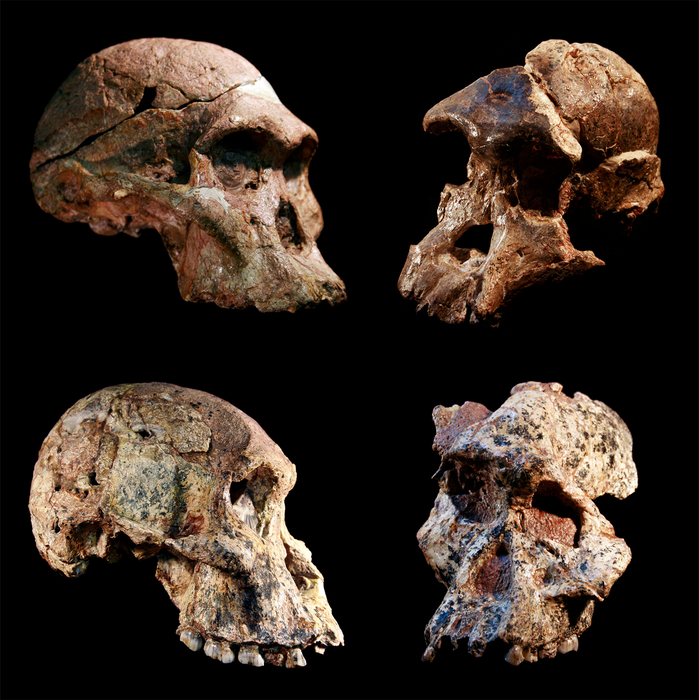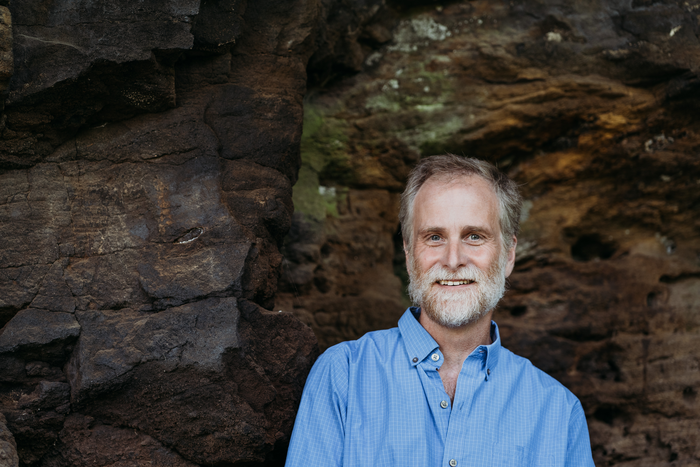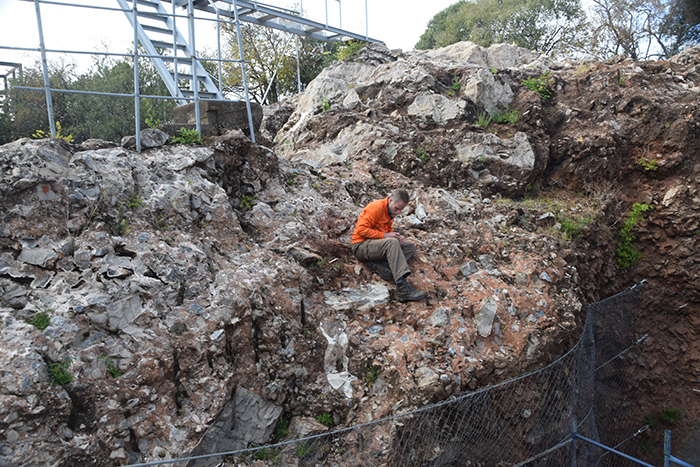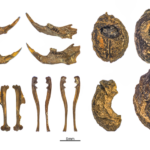Famous Sterkfontein Caves deposit one million years older than previously thought
New dates for Australopithecus-bearing Sterkfontein Cave deposit places South African hominin fossils at the center of global paleo research.

Fossils found at the Sterkfontein Caves in South Africa reveal nearly four million years of hominin and environmental evolution. Since research began at the site in 1936 with the discovery, by Robert Broom, of the first adult hominin of the genus Australopithecus, it has become famous for the hundreds of Australopithecus fossils yielded from excavations of ancient cave infills, including iconic specimens such as the cranium known as Mrs. Ples and the Little Foot skeleton.
The majority of Sterkfontein’s wealth of Australopithecus fossils has been excavated from an ancient cave infill called ‘Member 4’ – the richest deposit of Australopithecus fossils in the world. Over the last 56 years of Wits-led research at Sterkfontein, the age of Member 4 at Sterkfontein have remained contested, with age estimates ranging from as young as about 2 million years ago, younger than the appearance of our genus Homo, back to about 3 million years.
New research presented in a paper published in the journal PNAS re-evaluates the age of Australopithecus from Member 4 at Sterkfontein together with the Jacovec Cavern, which contains a few additional hominin fossils in a deeper chamber in the cave.
“The new ages range from 3.4-3.6 million years for Member 4, indicating that the Sterkfontein hominins were contemporaries of other early Australopithecus species, like Australopithecus afarensis, in east Africa,” says Professor Dominic Stratford, director of research at the caves, and one of the authors on the paper.
The new ages are based on the radioactive decay of the rare isotopes aluminum-26 and beryllium-10 in the mineral quartz.
“These radioactive isotopes, known as cosmogenic nuclides, are produced by high-energy cosmic ray reactions near the ground surface, and their radioactive decay dates when the rocks were buried in the cave when they fell in the entrance together with the fossils,” says Professor Darryl Granger of Purdue University in the United States and lead author on the paper.
Previous dating of Member 4 has been based on dating calcite flowstone deposits found within the cave fill, but careful observations show that the flowstone is actually younger than the cave fill and so it underestimates the age of the fossils.
“This re-assessment of the age of Sterkfontein Member 4 Australopithecus fossils has important implications for the role of South Africa on the hominin evolution stage. Younger hominins, including Paranthropus and our genus Homo appear between about 2.8 and 2 million years ago. Based on previously suggested dates, the South African Australopithecus species were too young to be their ancestors, so it has been considered more likely that Homo and Paranthropus evolved in East Africa,” says Stratford.
The new dates show that Australopithecus existed at Sterkfontein almost a million years prior to the appearance of Paranthropus and Homo, providing more time for them to evolve here, in the Cradle of Humankind, and placing the hominins from this site front and center in the history early human evolution.
“This important new dating work pushes the age of some of the most interesting fossils in human evolution research, and one of South Africa’s most iconic fossils, Mrs Ples, back a million years to a time when, in east Africa, we find other iconic early hominins like Lucy,” says Stratford.
“The redating of the Australopithecus-bearing infills at the Sterkfontein Caves will undoubtably re-ignite the debate over the diverse characteristics of Australopithecus at Sterkfontein, and whether there could have been South African ancestors to later hominins,” says Granger.
Bibliographic information:
Cosmogenic nuclide dating of Australopithecus at Sterkfontein, South Africa, Proceedings of the National Academy of Sciences, Darryl E. Granger, Dominic Stratford, Laurent Bruxelles, Ryan J. Gibbon, Ronald J. Clarke and Kathleen Kuman, DOI: 10.1073/pnas.2123516119
Press release from the University of the Witwatersrand.
———————————————————————————————————————————————————-
Fossils in the ‘Cradle of Humankind’ may be more than a million years older than previously thought
WEST LAFAYETTE, Ind. — The earth doesn’t give up its secrets easily – not even in the “Cradle of Humankind” in South Africa, where a wealth of fossils relating to human evolution have been found.

For decades, scientists have studied these fossils of early human ancestors and their long-lost relatives. Now, a dating method developed by a Purdue University geologist just pushed the age of some of these fossils found at the site of Sterkfontein Caves back more than a million years. This would make them older than Dinkinesh, also called Lucy, the world’s most famous Australopithecus fossil.
The “Cradle of Humankind” is a UNESCO World Heritage Site in South Africa that comprises a variety of fossil-bearing cave deposits, including at Sterkfontein Caves. Sterkfontein was made famous by the discovery of the first adult Australopithecus, an ancient hominin, in 1936. Hominins includes humans and our ancestral relatives, but not the other great apes. Since then, hundreds of Australopithecus fossils have been found there, including the well-known Mrs. Ples, and the nearly complete skeleton known as Little Foot. Paleoanthropologists and other scientists have studied Sterkfontein and other cave sites in the Cradle of Humankind for decades to shed light on human and environmental evolution over the past 4 million years.
Darryl Granger, a professor of earth, atmospheric, and planetary sciences in Purdue University’s College of Science, is one of those scientists, working as part of an international team. Granger specializes in dating geologic deposits, including those in caves. As a doctoral student, he devised a method for dating buried cave sediments that is now used by researchers all over the world. His previous work at Sterkfontein dated the Little Foot skeleton to about 3.7 million years old, but scientists are still debating the age of other fossils at the site.
In a study published in the Proceedings of the National Academy of Sciences, Granger and a team of scientists including researchers from the University of the Witwatersrand in Johannesburg, South Africa and the University Toulouse Jean Jaurès in France, have discovered that not only Little Foot, but all of the Australopithecus-bearing cave sediments date from about 3.4 to 3.7 million years old, rather than 2-2.5 million years old as scientists previously theorized. That age places these fossils toward the beginning of the Australopithecus era, rather than near the end. Dinkinesh, who hails from Ethiopia, is 3.2 million years old, and her species, Australopithecus africanus, hails back to about 3.9 million years old.
Sterkfontein is a deep and complex cave system that preserves a long history of hominin occupation of the area. Understanding the dates of the fossils here can be tricky, as rocks and bones tumbled to the bottom of a deep hole in the ground, and there are few ways to date cave sediments.
In East Africa, where many hominin fossils have been found, the Great Rift Valley volcanoes lay down layers of ash that can be dated. Researchers use those layers to estimate how old a fossil is. In South Africa – especially in a cave – the scientists don’t have that luxury. They typically use other animal fossils found around the bones to estimate their age or calcite flowstone deposited in the cave. But bones can shift in the cave, and young flowstone can be deposited in old sediment, making those methods potentially incorrect. A more accurate method is to date the actual rocks in which the fossils were found. The concrete-like matrix that embeds the fossil, called breccia, is the material Granger and his team analyze.
“Sterkfontein has more Australopithecus fossils than anywhere else in the world,” Granger said. “But it’s hard to get a good date on them. People have looked at the animal fossils found near them and compared the ages of cave features like flowstones and gotten a range of different dates. What our data does is resolve these controversies. It shows that these fossils are old – much older than we originally thought.”
Granger and the team used accelerator mass spectrometry to measure radioactive nuclides in the rocks, as well as geologic mapping and an intimate understanding of how cave sediments accumulate to determine the age of the Australopithecus-bearing sediments at Sterkfontein,
Granger and the research group at the Purdue Rare Isotope Measurement Laboratory (PRIME Lab) study so-called cosmogenic nuclides and what they can reveal about the history of fossils, geological features and rock. Cosmogenic nuclides are extremely rare isotopes produced by cosmic rays —high-energy particles that constantly bombard the earth. These incoming cosmic rays have enough energy to cause nuclear reactions inside rocks at the ground surface, creating new, radioactive isotopes within the mineral crystals. An example is aluminum-26: aluminum that is missing a neutron and slowly decays to turn into magnesium over a period of millions of years. Since aluminum-26 is formed when a rock is exposed at the surface, but not after it has been deeply buried in a cave, PRIME lab researchers can date cave sediments (and the fossils within them) by measuring levels of aluminum-26 in tandem with another cosmogenic nuclide, beryllium-10.
In addition to the new dates at Sterkfontein based on cosmogenic nuclides, the research team made careful maps of the cave deposits and showed how animal fossils of different ages would have been mixed together during excavations in the 1930s and 1940s, leading to decades of confusion with the previous ages.
“What I hope is that this convinces people that this dating method gives reliable results,” Granger said. “Using this method, we can more accurately place ancient humans and their relatives in the correct time periods, in Africa, and elsewhere across the world.”
The age of the fossils matters because it influences scientists’ understanding of the living landscape of the time. How and where humans evolved, how they fit into the ecosystem, and who their closest relatives are and were, are pressing and complex questions. Putting the fossils at Sterkfontein into their proper context is one step towards solving the entire puzzle.
About Purdue University
Purdue University is a top public research institution developing practical solutions to today’s toughest challenges. Ranked in each of the last four years as one of the 10 Most Innovative universities in the United States by U.S. News & World Report, Purdue delivers world-changing research and out-of-this-world discovery. Committed to hands-on and online, real-world learning, Purdue offers a transformative education to all. Committed to affordability and accessibility, Purdue has frozen tuition and most fees at 2012-13 levels, enabling more students than ever to graduate debt-free. See how Purdue never stops in the persistent pursuit of the next giant leap at https://stories.purdue.edu.
Press release from Purdue University.
———————————————————————————————————————————————————-
Australopithecines in South Africa are older than previously thought
Australopithecus africanus individuals lived at least one million years earlier than previous dating indicated. This is the result from dating a cave deposit from the Sterkfontein site (South Africa), one of the richest in australopithecine remains, where the fossil of Mrs Ples, one of the first complete skulls of this kind of hominin, was discovered in 1947. The area had been dated to between 2.1 and 2.6 million years ago, but from intrusive sediments that arrived in the fossiliferous formation after its constitution. Now, thanks to stratigraphic work and cosmogenic isotope dating1,an international team including a CNRS researcher2 from the Travaux et recherches archéologiques sur les cultures, les espaces et les sociétés laboratory (CNRS / Ministère de la culture / Université Toulouse – Jean Jaurès), has shown that the rocks of this cave were buried with the fossils 3.4 to 3.6 million years ago. This result pushes back the age of Australopithecus africanus, such as Mrs Ples, to a time similar to that of Australopithecus afarensis from East Africa, contradicting the idea that the former descended from the latter. Better still, if we compare her to the famous A. afarensis fossil, Mrs Ples would be even “older” than Lucy. Published in PNAS the week of June 27 2022, these results invite us to no longer consider East Africa as the only “Cradle of Humanity” but to also include southern Africa, and to rethink this notion at the scale of the continent.
1- This method of absolute dating is used to determine the duration of time the rock was exposed to cosmic rays: cosmogenic nuclides are isotopes that are produced by nuclear reactions when rock is exposed to cosmic rays. The isotopes accumulate from the moment the rock reaches the surface but decrease in a differential way if some of them fall into the cave, as they are then partly protected from the radiation. For this work, the scientists measured the ratio between beryllium 10 and aluminium 26 isotopes.
2- From the Travaux et recherches archéologiques sur les cultures, les espaces et les sociétés laboratory (CNRS / Ministère de la culture / Université Toulouse – Jean Jaurès). The research team also involved scientists from Purdue University (USA), the University of the Witwatersrand (South Africa) and the College of Cape Town.

Press release from CNRS


